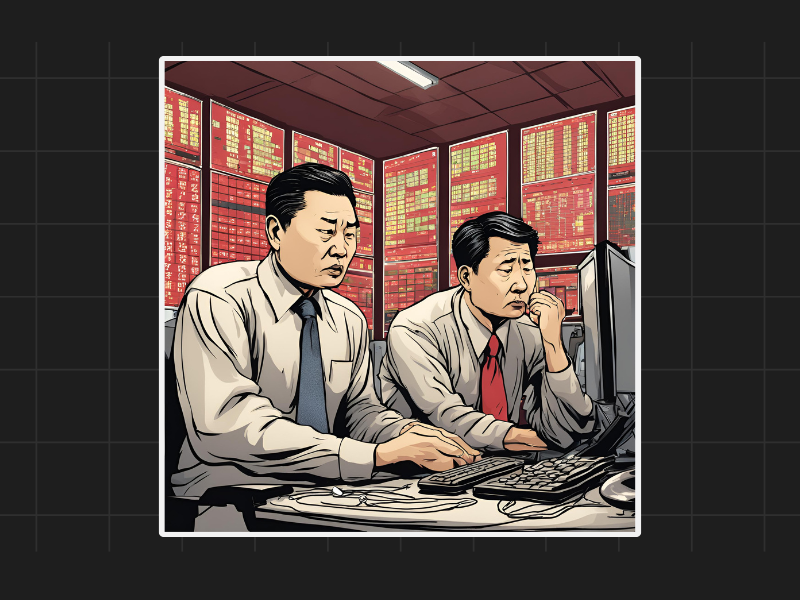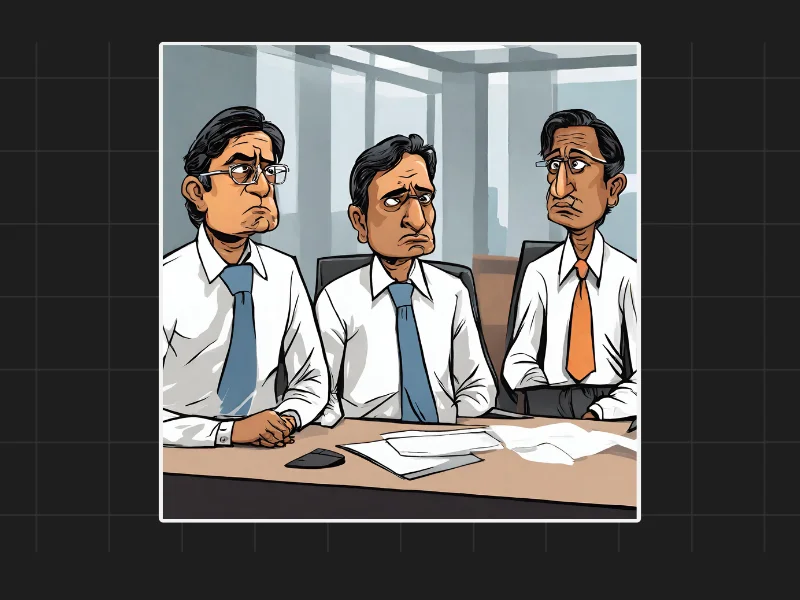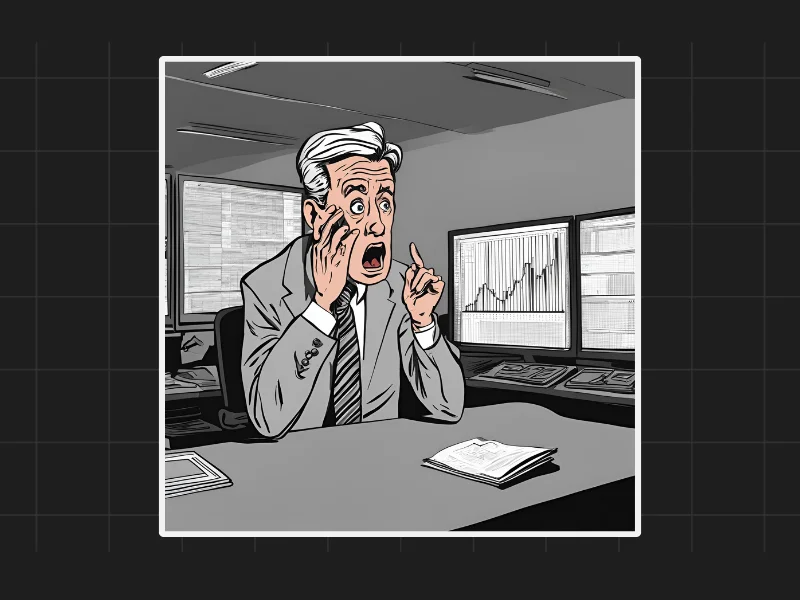The Impact of Regulatory Changes on Options Trading
Recent data from Kotak Institutional Equities highlights an important trend in the options trading markets, similar to what is happening in India today. Observations from South Korea and China show significant impacts of regulatory changes on trading volumes and market dynamics.
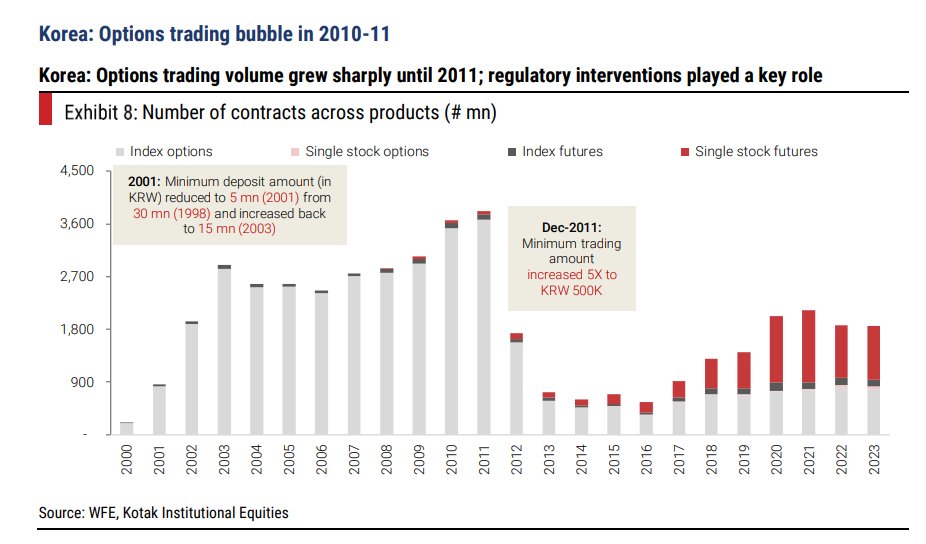
South Korea’s Options Trading Surge
From 2000 to 2011, South Korea experienced a surge in options trading, much like the current trend in India. This period saw a rapid increase in options trading volumes, reaching a point of what can be described as “options mania.” To curb this, authorities in South Korea implemented regulatory changes in December 2011. They increased the minimum trading amount by 100 times, which meant that options that previously traded for smaller amounts now required a much larger investment.
Regulatory Impact on South Korea’s Market
The immediate effect of these regulations was a sharp decline in trading volumes. The measures, which included changes in lot sizes and minimum deposit amounts, led to a significant drop in options trading. However, single stock futures trading saw a dramatic rise as traders shifted their focus. This shift indicates how regulatory changes can alter market behavior, moving trading activity from one type of financial instrument to another.
China’s Futures Trading Frenzy
China’s experience with futures trading offers another compelling example. Between 2012 and 2015, China saw a massive increase in index futures trading volumes. The number of contracts traded surged nearly fivefold, reaching unprecedented levels. However, in 2015, Chinese authorities introduced stringent regulations to curb this trading frenzy.
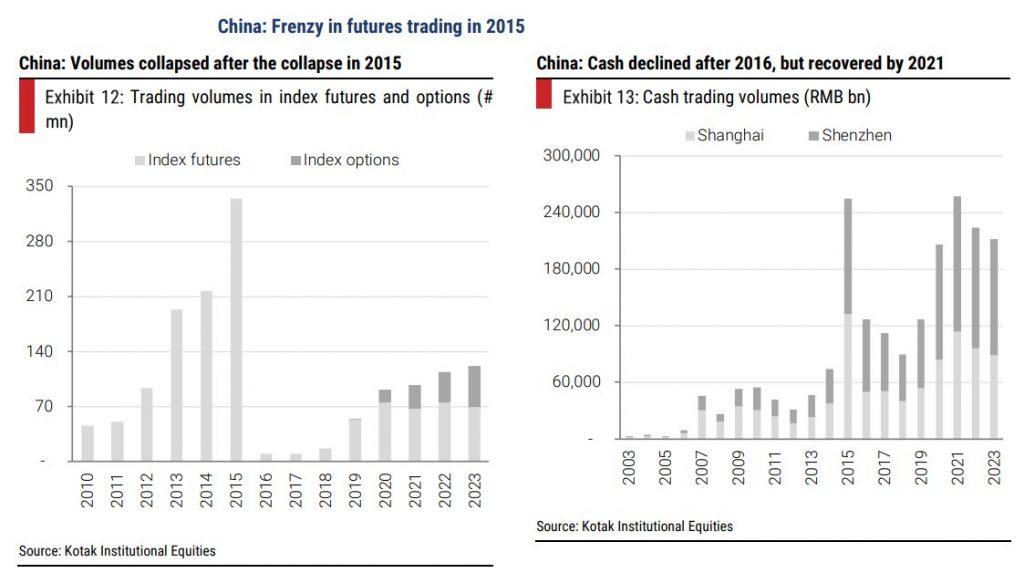
Drastic Measures in China
The regulatory changes in China were severe. Margin requirements increased from 10% to 40%, transaction fees rose from 0.015% to 2.3%, and the position limit per trader was slashed from 600 contracts to just 10. These drastic measures caused an immediate collapse in trading volumes. The market took a significant hit, and trading volumes have only recovered to the levels seen before the surge.
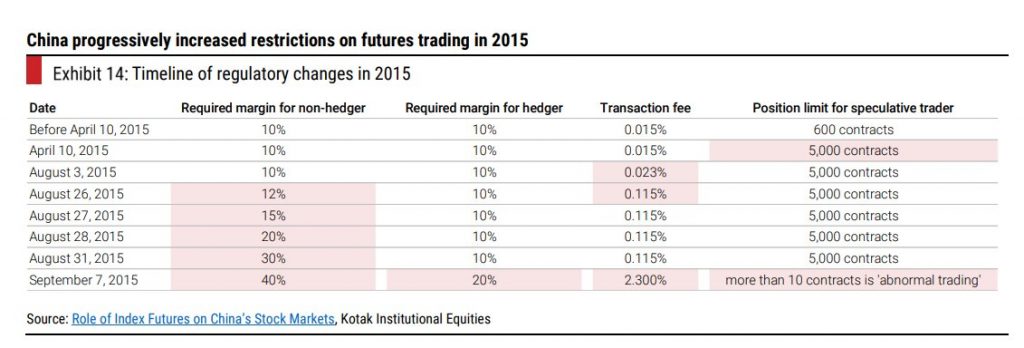
Lessons for India
These examples from South Korea and China serve as cautionary tales for India. The Indian market is currently experiencing a similar surge in options trading. If Indian regulators decide to implement similar curbs, it could have a detrimental impact on the market. The experiences of South Korea and China show that such regulatory interventions can lead to a sharp decline in trading volumes and shift market behavior significantly.
The regulatory interventions in South Korea and China highlight the risks of sudden and severe market regulations. These measures not only increased the cost of transactions but also caused entire markets to collapse temporarily. It is crucial for Indian regulators to consider these examples carefully before implementing any drastic changes.

Disclaimers and disclosures : https://tinyurl.com/2763eyaz
If you have any questions, please write to support@weekendinvesting.com

